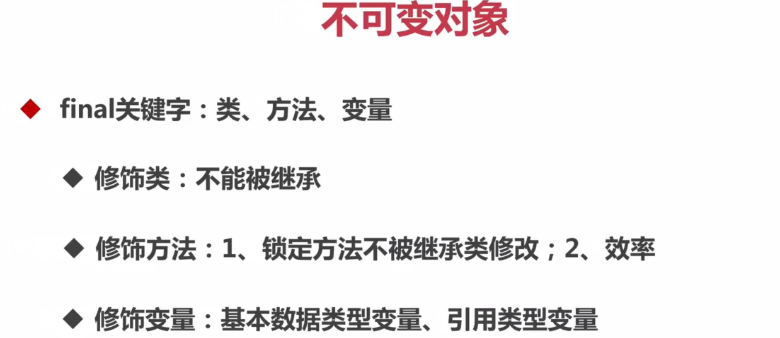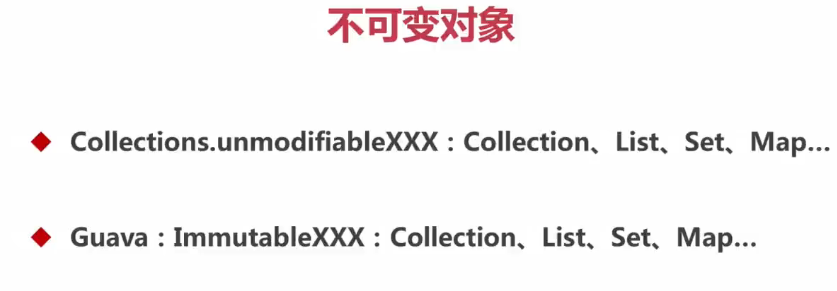不可变类:所谓的不可变类是指这个类的实例一旦创建完成后,就不能改变其成员变量值。如JDK内部自带的很多不可变类:Interger、Long和String等。
可变类:相对于不可变类,可变类创建实例后可以改变其成员变量值,开发中创建的大部分类都属于可变类。
不可变类的优点:
1.线程安全
不可变对象是线程安全的,在线程之间可以相互共享,不需要利用特殊机制来保证同步问题,因为对象的值无法改变。
可以降低并发错误的可能性,因为不需要用一些锁机制等保证内存一致性问题也减少了同步开销。
2.易于构造、使用和测试


一个类的private的方法会隐式的申明为final方法


package com.mmall.concurrency.example.immutable; import com.google.common.collect.Maps; import com.mmall.concurrency.annoations.NotThreadSafe; import lombok.extern.slf4j.Slf4j; import java.util.Map; @Slf4j @NotThreadSafe public class ImmutableExample1 { private final static Integer a = 1; private final static String b = "2"; private final static Map<Integer, Integer> map = Maps.newHashMap(); static { map.put(1, 2); map.put(3, 4); map.put(5, 6); } public static void main(String[] args) { // a = 2; // b = "3"; // map = Maps.newHashMap(); map.put(1, 3); log.info("{}", map.get(1)); } private void test(final int a) { // a = 1; } }

package com.mmall.concurrency.example.immutable; import com.google.common.collect.Maps; import com.mmall.concurrency.annoations.ThreadSafe; import lombok.extern.slf4j.Slf4j; import java.util.Collections; import java.util.Map; @Slf4j @ThreadSafe public class ImmutableExample2 { private static Map<Integer, Integer> map = Maps.newHashMap(); static { map.put(1, 2); map.put(3, 4); map.put(5, 6); map = Collections.unmodifiableMap(map); } public static void main(String[] args) { map.put(1, 3); log.info("{}", map.get(1)); } }

package com.mmall.concurrency.example.immutable; import com.google.common.collect.ImmutableList; import com.google.common.collect.ImmutableMap; import com.google.common.collect.ImmutableSet; import com.mmall.concurrency.annoations.ThreadSafe; @ThreadSafe public class ImmutableExample3 { private final static ImmutableList<Integer> list = ImmutableList.of(1, 2, 3); private final static ImmutableSet set = ImmutableSet.copyOf(list); private final static ImmutableMap<Integer, Integer> map = ImmutableMap.of(1, 2, 3, 4); private final static ImmutableMap<Integer, Integer> map2 = ImmutableMap.<Integer, Integer>builder() .put(1, 2).put(3, 4).put(5, 6).build(); public static void main(String[] args) { System.out.println(map2.get(3)); } }
